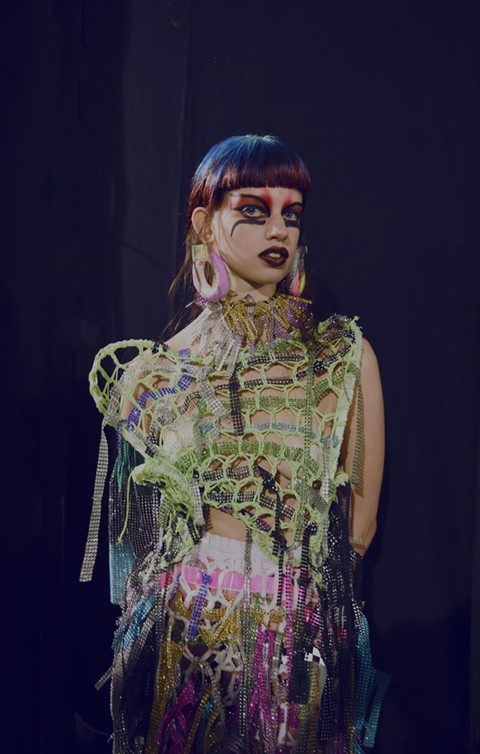Osman Ahmed reflects on the young designers whose creative fearlessness electrified the London Fashion Week schedule
Now that’s what you call London Fashion Week. Just when you thought that political turmoil and a see-now-buy-now movement would dull the British capital’s creative fearlessness, along comes a handful of bright young things that electrify the schedule with their utterly sparkling inventiveness, who staged sheer feats of visual splendour that were akin to performance art. There were apt articulations of Brexit’s aftermath. There were purpose-built sets that wouldn’t be out of place at MoMa. There was even a catwalk show that was so infectiously fabulous that it could inspire the most militant of health freaks to abandon their smoothies for a night of glitteringly unadulterated hedonism. Faustine Steinmetz, Matty Bovan, Richard Malone, Marta Jakubowski and Phoebe English create a sense of drama, excitement and sartorial relevance that flies the flag for what London is renowned for: unabashed, unapologetic creativity. As different as they are, what united these five designers in their success was the unapologetically personal nature of their collections, each one a glimpse into the lives, minds and worlds of each of these fascinating individuals. In a time of uncertainty, what is certain is the categorical brilliance of the industry’s youth. Ladies and gentlemen, prepare to be inspired.
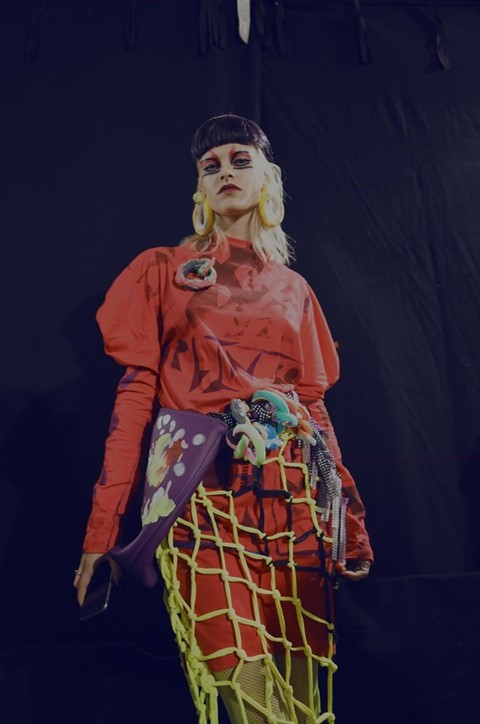
Matty Bovan
“I wanted it to say ‘I’m here’ – I am here. I am H-E-R-E - here!” exclaimed the chartreuse-haired, coral-browed, more-is-more Central Saint Martins graduate Matty Bovan after his debut show. Just like Bovan, who has been working away in his mother Plum’s garden shed in York for the last few months, this rainbow-hued riot of sartorial energy was so optimistic that it could send even the most disillusioned, Brexit-battered Eeyore strutting to the nearest dancefloor with rhythmic pace. Each look shimmered with streams of disco diamanté, fluoro fishnets, sculptural clay jewellery and Kabuki beauty looks that took their cue from Bovan himself, who said he was inspired by British mythology, pagan folklore and downtown New York in the 1980s. Make no mistake, this is a full wardrobe – brimming with synthy, toxic colour and vivacious velour and vinyl, and exaggerated by the spray painted charm-laden handbags and shoes. Saturated chainmail emerged as a sensible option for night or day. “Swarovski is actually really heavy. This is incredibly time-consuming but it’s actually light so you can wear it for going out; these are good going out clothes,” explained Bovan. “It had to look hard and tough and cool and sexy.” Underneath all that jazzy styling, however, there were printed T-shirt dresses with Victoriana leg-of-mutton sleeves, woven rope and foam trousers and metallic leather jackets – plenty to take away and make your own. In a world of digital perfection and lame photo filters, Bovan’s handcrafted sensibility felt especially refreshing. “It will always have that,” he promised. “It gives it value.”
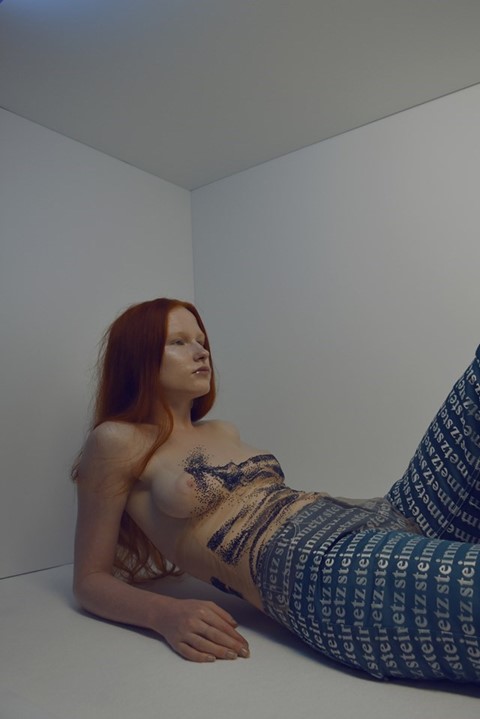
Faustine Steinmetz
Faustine Steinmetz is a denim virtuoso. She doesn’t need a thematic departure every season, because her variations on a singular theme are enough to inspire awe at her hand-woven, artistic approach to the fabric that is worn in every city in the world. This season (not that Steinmetz is into seasons – she prefers to see her collections as chapters in her sustainable label), the French designer took on the questionable denim choices that dominated the early 2000s – think of how pervasive crystal-embellished, overtly washed, logo-monogrammed denim was in that era, and then consider how in-demand those Dior saddle bags are at the moment. Swarovski crystal rock formations sprouted from the ghosts of all that diamanté lettering to create jeans that were akin to sculpture. Elsewhere, hand-weaving and ancient ikat techniques were treated with innovative digital printing and hand-dyeing – a self-referential take on ‘denim on denim’.
Steinmetz said she was inspired by the way that light affects the surface of fabric, so a sense of duality ran through each look with seemingly polar sensibilities, appearing and disappearing like the illusion of light and dark: structure and surface; vulgarity and elegance; organism and object. Since collaborating with stylist Georgia Pendlebury and set designer Thomas Petherick, Steinmetz’s presentations have become a conceptual medium for displaying clothes. The corridor of aquarium-like dioramas were her take on Vanessa Beecroft’s 2004 photography series The Sister Project, in which women in the same pose are photographed under different lights. Everything was blue. Everything was denim. Everything was made by hand. Kanye, eat your heart out – this is the real deal.
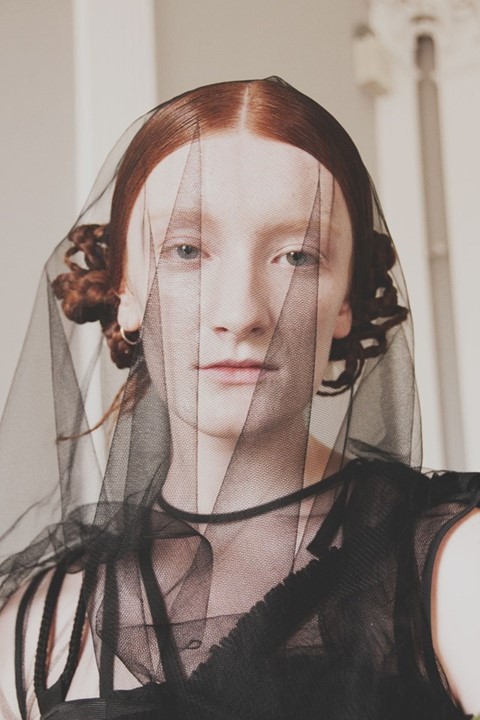
Phoebe English
Phoebe English’s presentation was a sartorial somatisation of her feelings post-Brexit – one that articulates the vox populi of her generation. Having recently experienced a rapturous reception to her menswear offering, the designer was reinvigorated with a sense of fearlessness when it came to considering what she wanted to say with her spring collection. “I didn’t want to do an angry presentation,” said the designer of her seven looks, each of which was an allegory of the seven stages of grief she felt she experienced after the majority of her countrymen’s vote to leave the European Union. “I wanted to make a record of how I experienced it and I felt I could be creatively bold.” There was The Archer, a symbol of impulsive shock; The Water Bearer, a manifestation of her tears; The Inquirer, hunting for truth and information; The Chancer, marching down The Mall in protest; The Strangler, weaving away to pass the time of uncertainty; and The Mourner, all-black and grief-stricken. What could have been pretentious was, in fact, a beautiful expression, and each of the monochrome looks, which included twisted cotton shirts, striped suiting and asymmetric silk dresses, were actually calling cards for further looks that the designer will present in her showroom. As far as presentation goes, this was a head-on and spot-on balance of performance and cathartically-crafted clothes that will put English in good stead for next spring.
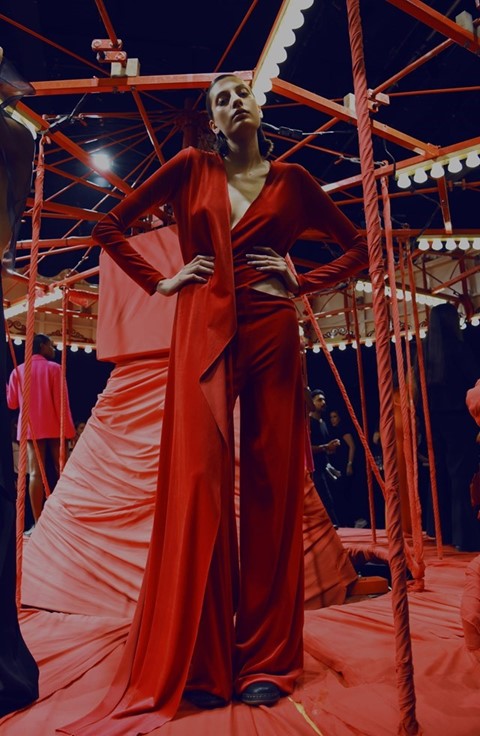
Marta Jakubowski
If you can’t already tell by the aromatic combination of hot pink (or shocking pink, as Schiaparelli called it) and zingy tangerine in Marta Jakubowski’s collection, the designer recently visited India, the spiritual homeland of that colour combination. Since her mother’s death four years ago, Jakubowski has turned personal introspection into the driving force behind her work. This season, she began thinking about funerals, especially her mother’s, and the act of celebrating one’s life. What did she do next? She went to five funerals a day in Varanasi, the holiest-of-holy city that sits on the banks of the spiritually cleansing Ganges river. “They believe in reincarnation so it’s so different,” she said. “There’s no crying and there’s music and colour.” Crêpe-de-chine dresses were finished with signature slashes under the breast or at the flank, as well as cut-out windows on thighs revealing glimpses into the wearer’s inner self.
The German-Polish designer also developed on last season’s pinstripes with laser-cut variations, which echoed her transparent cuts on a smaller scale. The set itself was a fabric-swathed merry-go-round that represented the circle of life and the constant dizzying pace of it all. “I’ve done a wedding dress,” she excitedly shared of the strapless white jumpsuit that she said is her ideal bridal gown. In India, however, white is the colour of mourning, and red de rigeur for brides. Luckily, Marta always does a red dress – it’s her favourite colour, after all. This time, they were in slashed claret velvet and silk. Mourning, wedding, and everything in between – Jakubowski is giving us life.
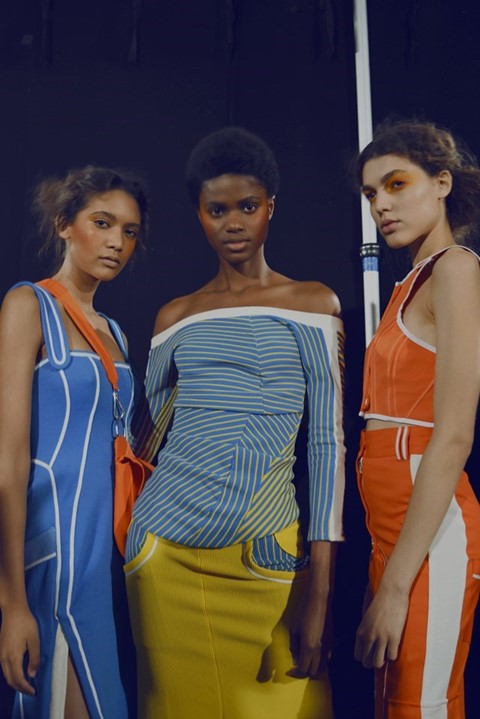
Richard Malone
One of the most dynamic discussions to grip the industry of late has been the pervasive conflation of designers and stylists. After all, collections are increasingly designed to be seen through a screen, which arguably means they’re not designed to be worn at all. Counter-current to such widespread Instagram-friendly design is Richard Malone, who elevates his working-class heritage to artfully precise tailoring fit for a duchess. Malone is the Azzedine Alaïa of his generation. What this Irish designer can do with fabric is not just short of wonder, but deserving of a 360-view. As well as a host of ribbed-knit basics which are designed to flatter, there were micro-mini dresses with body-contouring seams, wide-leg trousers that fit and flare, sculptural knits which flamenco dance around the body and vests and jackets which celebrate womanly shape. “I actually started by looking at very basic nurse uniforms and functional clothes,” explained Malone, whose distinctive aesthetic always draws directly from his youth in Wexford, Ireland. “Then I looked at ways contemporary clothes are morphing the body, and I looked at how 18th-century stays and fourteenth-century corsetry alter the body.” His aim was to draw on the effects of such restrictive garments and translate them into clothes with stretch and ease. Zips were positioned at angles to ensure easy self-fastening, bustiers had sculpting structures but with adjustable ties or poppers to allow room for change, and spacious pockets were cleverly worked into garments because, well, who doesn’t need pockets? “They’ll never be the same in a different picture,” explained Malone of his dimensional work. “It’s to do with the body.” As for the sunny palette of seaside blue, yellow and orange, which could easily be taken from a scene in the south of France, the designer offers a satisfyingly subversive explanation. “I love them because it looks like a building site!”
